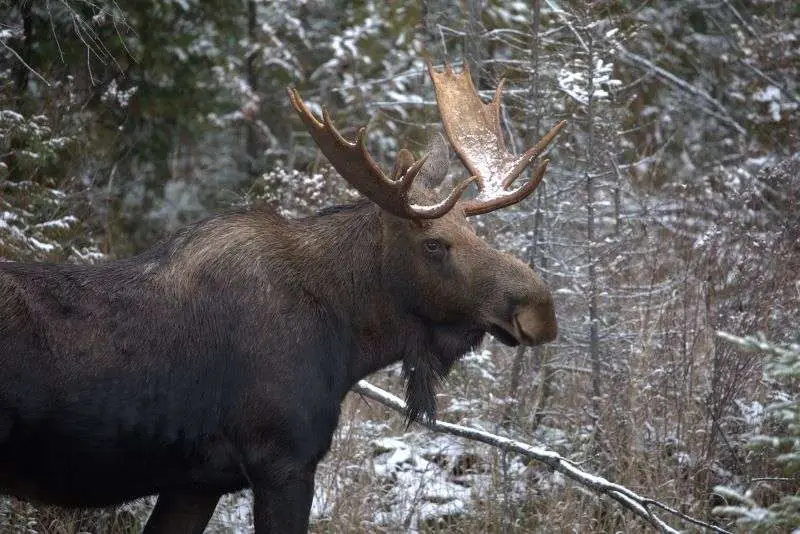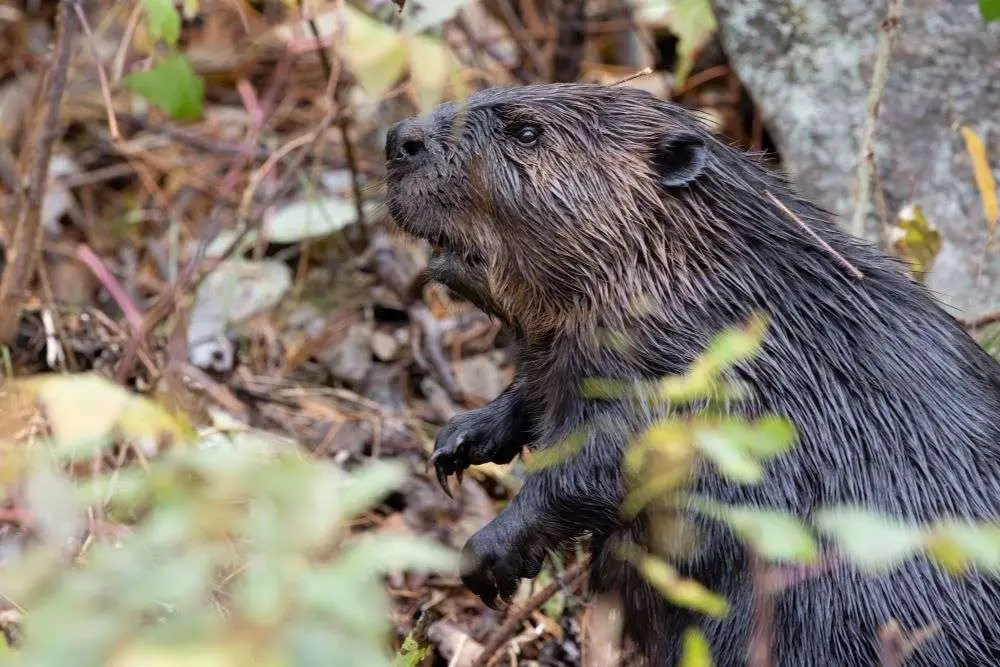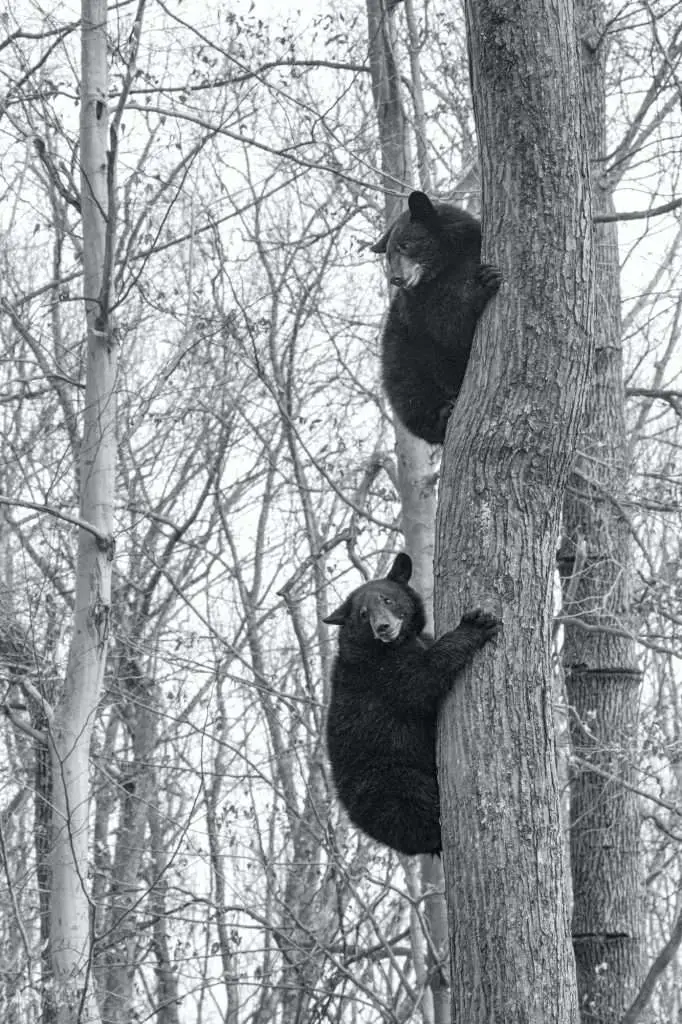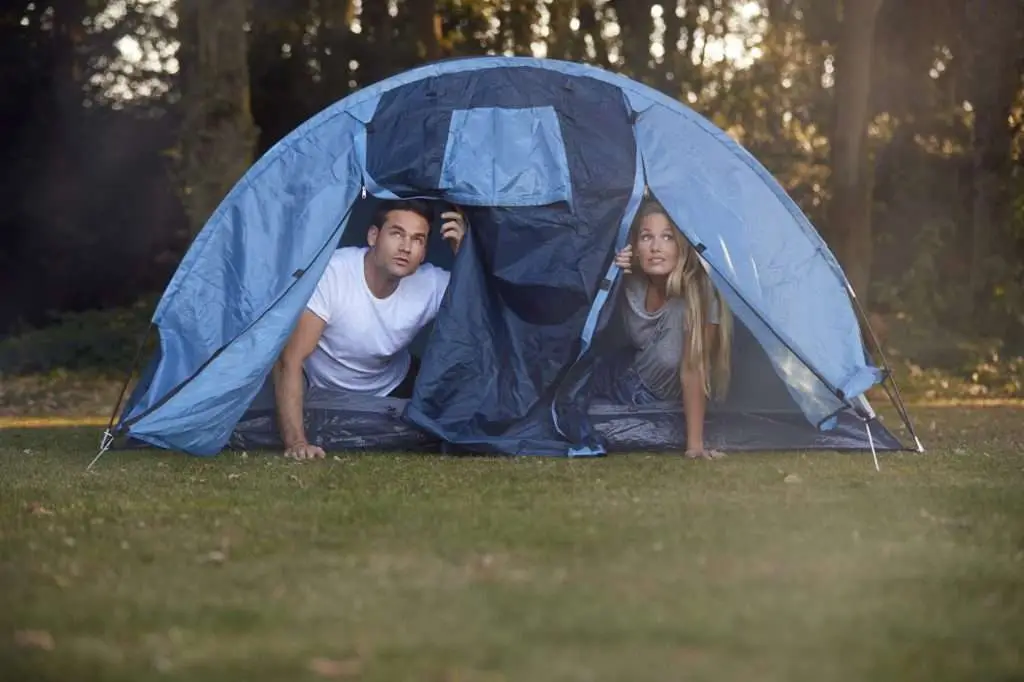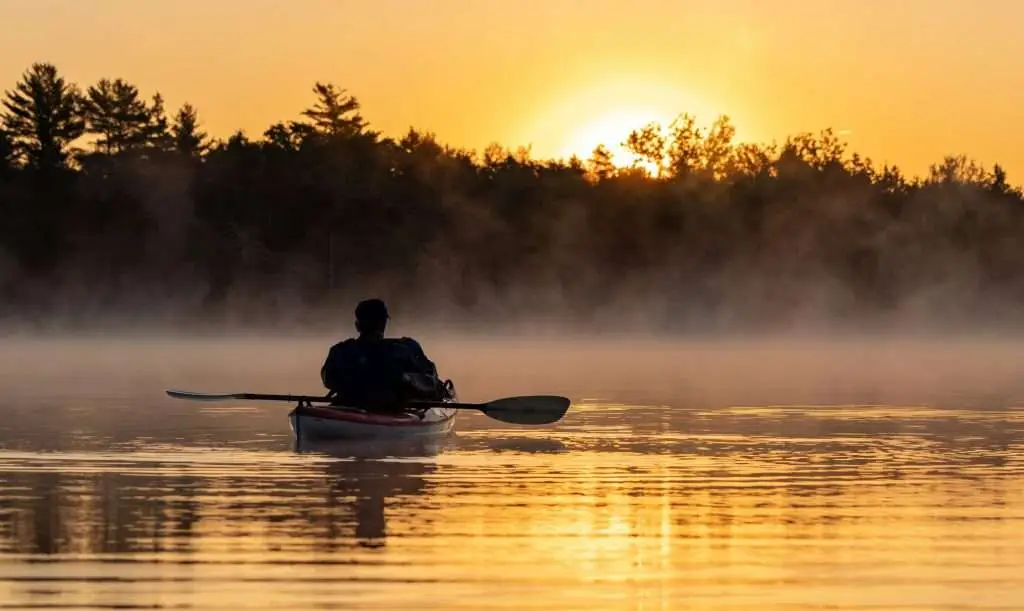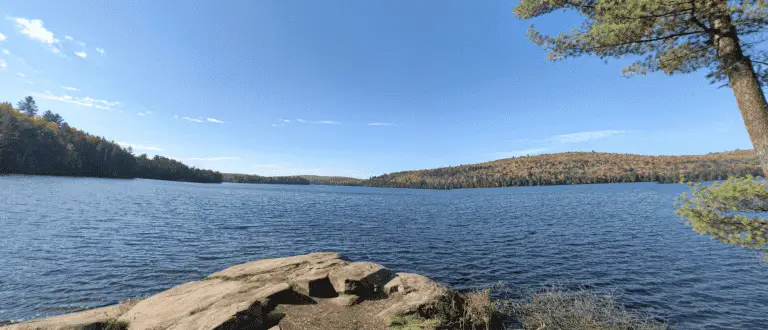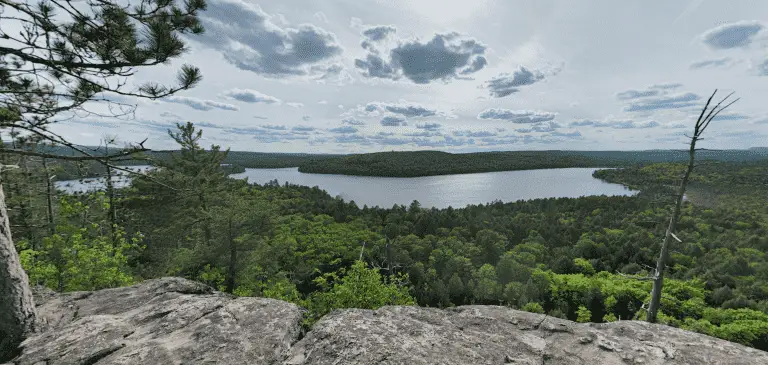Everything you need to know about Algonquin Provincial Park Camping
Table of Contents
Algonquin Provincial Park is one of the most popular camping destinations in Ontario. It’s well known for its stunning natural beauty, its numerous scenic hiking trails, and its abundant wildlife.
Algonquin Provincial Park has a variety of camping options to suit its visitors various preferences. Algonquin Park is large enough to feature several different options for your camping experience. The campground you choose depends on how much of an adventure you’re looking for.
Nature lovers may want anything, from simple ready-to-camp glamping campgrounds, to authentic family-friendly car camping, to rough and tumble backcountry campgrounds of interior Algonquin Park.
Not sure what the difference is, or which one you feel like choosing? We’ll break them down for you in this blog!
Psst: we’ll also even give away tips on where to book a place to stay near the park in our new Algonquin Park accommodations guide, just in case you missed out on your chance to grab a site before they booked up!
Frontcountry camping in Algonquin Provincial Park
Frontcountry camping, also known as car camping, is available at several drive-in campgrounds around Algonquin Park.
Frontcountry campgrounds usually offer amenities like washrooms or comfort stations, including bathroom stalls, showers and sinks, as well as other comforts like picnic tables and fire pits.
Reservations are strongly recommended as these sites usually book up fast, especially during peak season which is July and August.
Didn’t book your Algonquin Provincial Park camping trip early enough? Click to check if Wilderness Campground has spaces left!
Backcountry camping in Algonquin Park
Backcountry camping is usually a popular choice for those seeking a more rugged outdoor experience. Backcountry campers can paddle or hike to remote campsites located throughout Algonquin Park’s interior.
If you’re backcountry camping in one of the interior Algonquin Park campgrounds, campers must be prepared to carry their gear and navigate waterways or trails in order to access your chosen site. Remember to pack plenty of food and water, as you won’t have easy access to food or ready-safe water during your adventure.
Permits are required for backcountry camping, and campsites must be reserved in advance.
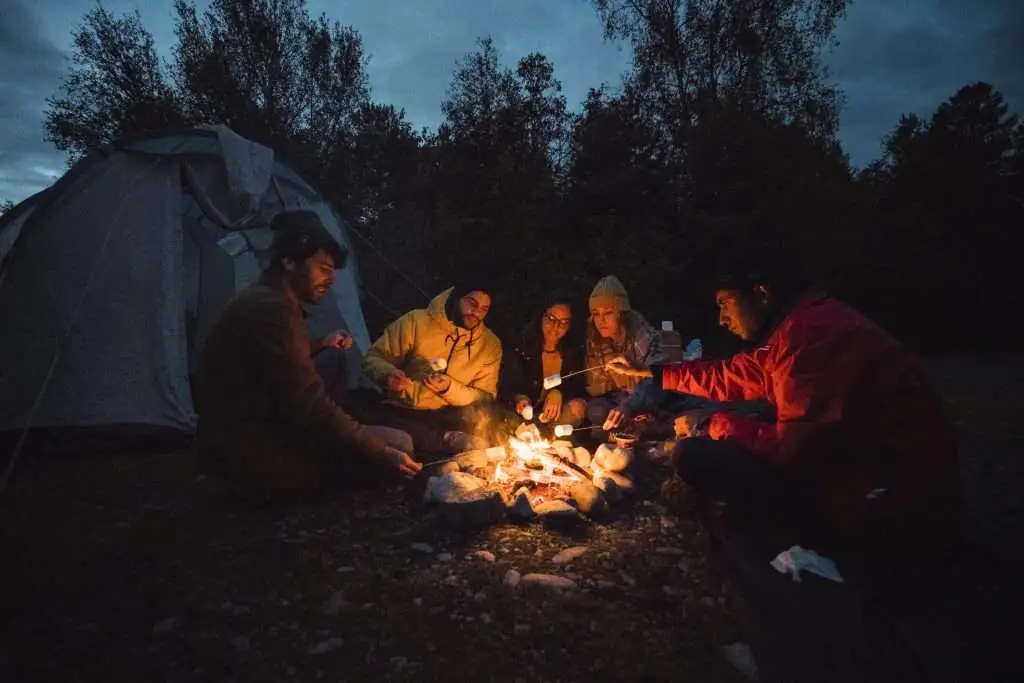
Reservations & permits for Algonquin Provincial Park camping
Permits are required for all campsites at Algonquin Provincial Park. These permits allow staff to monitor:
- Which type of camping you’ve signed up for
- The campsite you’ve reserved in advance
- The duration of your stay
- The fees you’ve paid to reserve the site
- The regulations and responsibilities you need to follow during your stay
If you’re curious about the fees associated with campground reservations or permits, you can explore Algonquin Park fees here. You can also make a reservation for a preferred campsite on the Algonquin Provincial Park website.
Wildlife and safety in Algonquin Park campgrounds
The Algonquin Park campgrounds are home to a diverse range of wildlife, including moose, black bears, and wolves. Before booking a campsites, make sure you read and understand the rules and regulations set by the Provincial Park authorities to ensure you and your camping gear are kept safe during your stay.
Protecting your food from wildlife
Campers should take precautions to store food securely and follow safety guidelines to minimize encounters with wildlife.
Did you know? The best place to store your food during a camping trip – especially in the backcountry, but even in frontcountry campgrounds – is from a food hanging tree? The ideal food hanging tree, according to Ontario Parks, should be:
- 100 metres or more from your sleeping space
- Has a branch at least 4 metres above the ground
- Allows you to hang your food and garbage at least 2 metres from the trunk of the tree.
Why? Because this makes it hard for tree-climbing critters to get into your food. Raccoons and bears can easily scale a tree – but setting up these other limitations may be just the trick to keep them out of your goods while you sleep.
Weather safety while camping
Always plan ahead. Check the weather forecast in the area you’re travelling to before your trip, and make sure to pack layers in case things get hotter or colder than you expected.
Always be aware of the potential hazards of rough terrain, inclement weather when camping in a remote location. Be sure to pack your First Aid kits, just in case!
Planning a winter trip? Read our blog on winter camping in Ontario so that you know how to prepare for the weather!
Activities around Algonquin Park campgrounds
In addition to the fun of simply camping in itself, Algonquin Park boasts a wide range of other activities for the eager adventurist, including:
- Canoeing and kayaking (check out gear rentals here!)
- Fishing
- Nearby local events
- Stargazing
- Wildlife viewing
- Hiking the trails (including winter hiking)
- And more!
And if you’re staying at one of the Algonquin Park campgrounds, you don’t want to miss a visit to the Lake of Two Rivers or the Algonquin Park Art Centre.
Take it from someone who lives just outside the park in the Township of South Algonquin – these are must-dos that you should add to your Algonquin Provincial Park camping bucket list!
Link to future Algonquin Park Wildlife blog
Link to Algonquin Park Trails blog we will be writing
Experiences While Algonquin Provincial Park Camping
Growing up near Algonquin Park, I’ve experienced first-hand its breathtaking landscapes, tranquil waters, and diverse wildlife, all of which combine to offer a sanctuary for mental and physical rejuvenation.
The park’s serene environment, rich in negative ions from its waterfalls, streams, and rivers, enhances mood and improves air quality, promoting a profound sense of relaxation and well-being. The stunning sunsets over its natural vistas encourage mindfulness and a deep connection with nature, providing a visually stunning and psychologically uplifting experience.
Algonquin’s unique wildlife encounters, from moose to beavers, deepen our connection to nature, fostering a sense of wonder and empathy. These moments of intimacy with nature not only reduce stress and enhance mood but also promote a meditative state of peace. My own encounters, like a close meeting with a doe or witnessing an otter’s playful hunt, have been magical, highlighting the park’s unparalleled natural beauty and the transformative experiences it offers. Algonquin is more than a park; it’s a source of inspiration and healing, making every visit worthwhile.
Chaos at Dawn: The Otter and the Bunny Chase
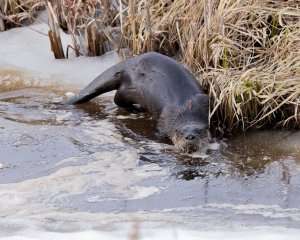 In another unforgettable experience, the wilderness of Algonquin revealed itself in a more playful, yet equally profound, manner. It was barely dawn, the sky a deep shade of twilight, when a shadowy figure approached my tent.
In another unforgettable experience, the wilderness of Algonquin revealed itself in a more playful, yet equally profound, manner. It was barely dawn, the sky a deep shade of twilight, when a shadowy figure approached my tent.
My initial fear was quickly replaced by curiosity as the creature, an otter, stood on its hind legs, pressing its hands against my tent in a gesture of playful investigation. As I cautiously stepped outside, my brother by my side, the early morning chaos unfolded.
The otter, having discovered a rabbit hole, was in the midst of a lively chase, sending a family of bunnies darting across the forest floor. The scene was straight out of a nature documentary, filled with the unexpected joy of life in the wild. We watched, captivated, as the otter pursued the bunnies, their frantic leaps a dance of survival and play.
In that moment, I was able to gently pick up one of the disoriented baby bunnies, feeling its heartbeat against my palm, a fragile life in the vastness of the park. It was an encounter that blurred the lines between observer and participant, a magical reminder of the vibrant tapestry of life that thrives in Algonquin.
Still pondering a camping adventure?
- The health benefits are rejuvenating.
- Listening to rain on your tent becomes an opportunity for family snuggle time.
- It’s a chance to teach your kids valuable skills like fire-making, swimming, paddling, and safety.
- The air is not only fresh but filled with an invigorating scent and abundant oxygen.
Algonquin Park is not just a destination; it’s an experience that nourishes the soul, sharpens our survival skills, and brings families closer in the most natural setting imaginable.
Algonquin Provincial Park Camping: campground options, tips and more
As someone who has grown up on Algonquin Park’s doorstep, I can tell you that it’s worth the trip!
And, as I’m now a parent, I also understand that camping can seem like a daunting adventure to some families – especially families with young kids.
One of the best things about Algonquin Park is that it’s so close to local amenities along the Highway 60 corridor that you can roam in and out of the park at your leisure to enjoy local restaurants, pick up groceries, stop by the LCBO, and fill the tank up with gas.
If you want your children to grow up loving nature as much as you do, but you’re hesitant to try the full camping experience, there are some other options that will keep you close to Algonquin Park without the need to worry about camping gear or unexpected lousy weather.
We will link to future Hwy 60 blog here
Algonquin Park Camping: Top 10 Tips
- Plan Ahead and Reserve Early: Algonquin Park is popular, especially in the summer and fall. Book your campsite or backcountry permit well in advance to secure your spot.
- Pack Wisely: Bring layers for changing weather, waterproof gear, and a good quality tent. Don’t forget eco-friendly toiletries, a first aid kit, and bear-safe food storage options.
- Leave No Trace: Respect the natural beauty of Algonquin by following Leave No Trace principles. Pack out what you pack in, stay on designated trails, and minimize campfire impacts.
- Water Safety is Key: If you plan to canoe or kayak, wear a life jacket at all times. Be aware of weather conditions and water temperatures, and always tell someone your route.
- Be Bear Wise: Store food and scented items securely, cook and eat away from your sleeping area, and know what to do if you encounter a bear.
- Respect Wildlife: Enjoy watching animals from a distance. Feeding or approaching wildlife can alter their natural behaviors and put both you and the animal at risk.
- Prepare for Bugs: Mosquitoes and blackflies can be plentiful, especially in early summer. Bring insect repellent, consider a bug jacket, and set up camp away from standing water.
- Explore Responsibly: Stick to marked trails to protect the park’s vegetation and your own safety. Use existing campsites and fire rings to minimize your impact.
- Learn Basic Survival Skills: Know how to navigate with a map and compass, start a fire safely, and signal for help if necessary. These skills can be invaluable in an emergency.
- Capture Memories, Not Nature: Take photos and memories with you, but leave plants, rocks, and artifacts as you find them for others to enjoy.
The Algonquin Park East Gate
One of our favourite properties is the East Gate Motel, situated near the Algonquin Park East Gate.
The East Gate is similar to the popular Algonquin Park West Gate in that you can stop for information, permits, and a washroom break, but the East Gate comes with more perks – like the fact that it’s consistently less busy than the West Gate.
Didn’t book your Algonquin Provincial Park camping trip in time? There may be spaces left at our Wilderness Campground!





